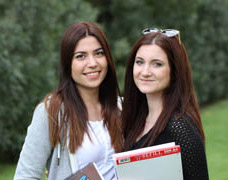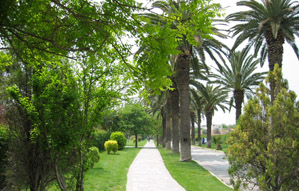Project Agrispin
AgriSpin, Space for innovations in Agriculture
The EU-project AgriSpin explores innovation intermediaries’ practices and support services in a diversity of European regions. AgriSpin aims at the improvement of methods for innovation in agriculture and speeding up innovation processes by establishing a strong European network among advisors, researchers, organizational experts and innovation companies.
Project period:2.5 years, starting March 2015
Funding source: Horizon 2020- the EU Framework Programme for Research and Innovation
Funding budget: € 2.000.000
Project website: www.agrispin.eu
Project Partners
- Knowledge Centre for Agriculture, SEGES, Denmark
- Dutch Southern Farmers Organisation, ZLTO, Netherlands
- University of Hohenheim, UHOH, Germany
- Union of Chambers of Agriculture, VLK, Germany
- Innovatiesteunpunt, ISP, Belgium
- Latvian Rural Advisory and Training, Centre, LLKC, Latvia
- ACTA, France
- Tuscany Region, RT, Italy
- ProAgria, Finland
- IFOAM EU GROUP, Belgium
- Teagasc, Ireland
- Cirad-UMR Innovation, France
- ADEPT, Romania
- Agricultural University of Athens, AUA, Greece
- Fundacion Hazi Fundazioa, FHF, Spain
The Greek innovation cases
Efkarpon-Hellenic Super foods
Efkarpon -Hellenic Super foods is a new generation cooperative (NGC) involved in the cultivation, processing and marketing of four super-foods according to organic farming standards. It is the first agricultural NGC in Thessaly region and a pioneer of the sector all over Greece.
Energy Cooperative of Karditsa (ESEK)
ESEK is a non-agricultural (civic) cooperative that utilizes renewable sources of energy, i.e. biomass produced as byproduct of cultivations and forestry.
The Agricultural Stevia Cooperative
ASYST is a new generation cooperative (NGC) engaged in the cultivation, processing and trade of stevia products (Stevia sp.)
PSYHANTHOS, Agricultural Cooperative of Pulses and Food Items
PSYHANTHOS is a new generation cooperative (NGC), which promotes the re-introduction of traditional pulses varieties and its operation is based on active participation in unanimous decision-taking processes.
Goals and Objectives
Specifically, the project aims at improving and valorizing European agriculture innovation systems by:
1) Identifying, examining and cross comparing successful/best-fit innovation on support
practices across Europe,
2) Analyzing and better understanding the role of innovation intermediaries and support
services within agriculture related innovation processes,
3) Creating and strengthening effective networks among AKIS stakeholders at European level, and
4) Facilitating a cross-learning process towards supporting innovation processes, scaling up
identified best –fit practices and strengthening the innovation capacities of the stakeholders
Work Packages
- Framework and guidelines for collection and monitoring. Build a conceptual framework for collecting cases of innovations and observations
- Evaluation of innovation practices, Cross Visits. Explore innovation systems in practice; observe, inspire and initiate action for improvements
- Identification of best practices to improve innovation practice and support systems. Reflect on findings; analyse factors for success and failure; share new insights by producing videos, book, easy-reader materials.
- Networking and institutional uptake. Involve ‘enabling environment’ in an advisory board for inducing changes (regional decision makers)
- Dissemination. Share experiences with international professional community through seminars and workshops. Provide and supply channels of communication from the project to external stakeholders and the wider public.
- Project management and communication. Covers the management and organizational tasks that maintain constructive working conditions for all project.
Methodology
The methodology of AgriSpin is based on cross- visits. Through semi-structured interviews with innovators and support services providers, visitors try to gain a deeper insight on the innovative cases, exploring:
a. the innovation processes,
b. the actors and the networks involved,
c. the characteristics of the environment enabling the innovation and
d. the classification of innovations.
Subsequently visitors analyse and re-construct the case using a number of tools, such as time-lines and the spiral of innovation in order to conclude on a number of pearls and puzzles, emerging from innovation processes, and proposals, which are presented to innovators and other stakeholders in a symposium the last day of the cross-visit.



